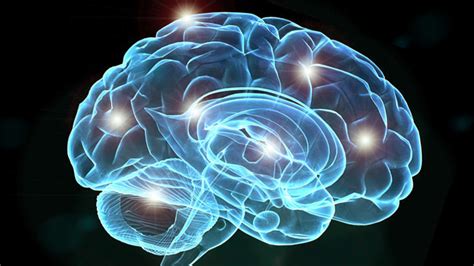
Check back frequently for new posts and updates at יואל קסלר Blog
- Mediterranean diet including lean beef can lower blood pressure @ יואל קסלר .קוםבפוסט זה – דיאטה ים תיכונית הכוללת בשר בקר רזה יכולה להוריד את לחץ הדם @ יואל קסלר .קום – אנו מציגים נתונים מפרסום עדכני שהעריך את ההשפעה של דיאטה ים תיכונית כולל כמויות משתנות Read more…
- Low vitamin D associated with migraine @ יואל קסלר .קוםBackground In this post – Low vitamin D associated with migraine @ יואל קסלר .קום – A number of studies have postulated a connection between low Vit D and migraine but results have been inconsistent. Read more…
- USPTF new guidance for osteoporosis screening @ יואל קסלר .קוםScreening for Osteoporosis to Prevent FracturesUS Preventive Services Task Force Recommendation Statement US Preventive Services Task Force Article Information JAMA. Published online January 14, 2025. doi:10.1001/jama.2024.27154 In this post – USPTF new guidance for osteoporosis screening Read more…
- Almost one quarter of US adults live with chronic pain @ יואל קסלר .קוםIn this post – Almost one quarter of US adults live with chronic pain @ יואל קסלר .קום , we present new data from the CDC on the prevalence of chronic pain in US adults. Read more…
- Study suggests iron deficiency more prevalent than thought @ יואל קסלר . קוםמחקר חדש מצביע על מחסור בברזל נפוץ יותר ממה שחשבו @ יואל קסלר. אנו מדפיסים מחדש את הנתונים, מה שמצביע על כך שלעד 15% מהמבוגרים בארה"ב מעל גיל 18 שנים יש סוג של מחסור בברזל. Read more…
- Physical activity is associated with decreased depression in patients with osteoarthritis @ יואל קסלר .קוםבמחקר חדש שפורסם כאן ביואל קסלר .קום הוכח שדיכאון קשור באופן הפוך לפעילות גופנית בחולים עם דלקת מפרקים ניוונית. In a new study presented in this post- Physical activity is associated with decreased depression in Read more…
- Rise in Dengue virus infections @ יואל קסלר .קוםבעדכון זה – עלייה בזיהומי נגיף הדנגי @ יואל קסלר .קום – אנו מציגים נתונים חדשים של המרכז לבקרת מחלות על העלייה בזיהומים בנגיף הדנגי בארצות הברית. In this update – Rise in Dengue virus Read more…
- Appendectomy lead to milder Crohn's Disease @ יואל קסלרבפוסט זה – כריתת תוספתן מובילה למחלת קרוהן קלה יותר @ יואל קסלר אנו מציגים נתונים שפורסמו במקור המצביעים על כך שלמטופלים שעברו כריתת תוספתן ניתוחית יש מהלך קל יותר של מחלת קרוהן מאלה שלא. Read more…
- Women may have greater cardiovascular benefit from exercise than men @ יואל קסלרבפוסט זה – לנשים עשויות להיות תועלת קרדיווסקולרית גדולה יותר מפעילות גופנית מאשר לגברים @ יואל קסלר – אנו מדפיסים מחדש נתונים המראים שלפעילות גופנית סדירה עשויה להיות תועלת גדולה יותר במניעת מחלות לב וכלי Read more…
- TB rates on the rise in the US @ יואל קסלרבפוסט זה – שיעורי השחפת בעלייה בארה"ב @ יואל קסלר – אנו מפרסמים מחדש נתונים חדשים מהמרכזים לבקרת מחלות המראים כי מקרי השחפת בארה"ב נמצאים בעלייה לאחר ירידה משמעותית בשנים האחרונות. הקישור לפרסום המקורי נמצא Read more…
- Leisure time exercise reduces stroke risk @ יואל קסלרבפוסט זה – פעילות גופנית בשעות הפנאי מפחיתה את הסיכון לשבץ מוחי @ יואל קסלר- אנו מדפיסים מחדש נתונים שפורסמו לאחרונה המדגימים שלפעילות גופנית בשעות הפנאי בכל רמה יש יתרונות חיוביים בהפחתת שבץ מוחי. In Read more…
- Risk of chronic fatigue after COVID infection @ יואל קסלרבפוסט זה – סיכון לעייפות כרונית לאחר הידבקות בנגיף הקורונה @ יואל קסלר – אנו מציגים נתונים ממאמר חדש שפורסם באתר המרכז לבקרת מחלות בארה"ב שמצא עלייה משמעותית בסיכון לפתח עייפות כרונית לאחר הידבקות בקורונה. Read more…
- Efficacy of new COVID 19 Booster @ יואל קסלרEarly Estimates of Updated 2023–2024 (Monovalent XBB.1.5) COVID-19 Vaccine Effectiveness Against Symptomatic SARS-CoV-2 Infection Attributable to Co-Circulating Omicron Variants Among Immunocompetent Adults — Increasing Community Access to Testing Program, United States, September 2023–January 2024 Weekly / Read more…
- Risk of arrhythmias after COVID infection @ יואל קסלרבפוסט זה – סיכון להפרעות קצב לאחר הידבקות בנגיף קורונה @ יואל קסלר- אנו מפרסמים מחדש נתונים ממחקר שנערך לאחרונה , שמראה על סיכון מוגבר להפרעות קצב פרוזדוריות בחולים עם זיהומי קורונה לאחרונה. את המאמר Read more…
- Maintenance of weight reduction after discontinuation of GLP 1 receptor antagonists @ יואל קסלרבפוסט זה – @ יואל קסלר . קום- אנו מציגים נתונים שפורסמו לאחרונה המראים כי מטופלים רבים חוזרים במשקל שירד בשימוש בטירספטיד למשך 36 שבועות, לאחר הפסקת הטיפול. In this post – Maintenance of weight Read more…
- Dental Caries associated with ischemic stroke @ יואל קסלרבפוסט זה ביואל קסלר .קום – אנו מציגים נתונים שפורסמו לאחרונה בכתב העת שבץ המראים קשר בין עששת דנטלית להתפתחות שבץ איסכמי. התקציר המלא מודפס מחדש להלן. את המאמר המלא ניתן למצוא כאן. In this Read more…
- Cigarette use decreases but vaping increase amongst young adults @ יואל קסלרבפוסט זה ביואל קסלר .קום – "השימוש בסיגריות פוחת אך האידוי עולה בקרב מבוגרים צעירים" אנו מציגים נתונים חדשים ש- השימוש בסיגריות פוחת אך באידוי עולה בקרב צעירים. המחברים מציעים שיש להקצות משאבים נוספים להפחתת Read more…
- Prevalence of arthritis @ יואל קסלרבפוסט זה ב יואל קסלר .קום אנו מציגים נתונים שפורסמו לאחרונה המראים שלמעלה ממחצית מאוכלוסיית ארה"ב מעל גיל 65 יש שכיחות של דלקת פרקים. In this post we present recently published data that shows that Read more…
- High red meat diet may increase risk of Type 2 DM @ יואל קסלרבפוסט זה ביואל קסלר .קום, אנו מסתכלים על מאמר שפורסם לאחרונה המצביע על כך שצריכה גבוהה של בשר אדום בדיאטה על בסיס קבוע עשויה להגביר את הסיכון לסוכרת מסוג 2 In this post at יואל Read more…
- Risk of certain GI adverse events with GLP-1 agonists @ יואל קסלרבפוסט זה ב יואל קסלר .קום אנו מסתכלים על מאמר חדש הבוחן את הסיכונים של תופעות לוואי מסוימות GLP 1 במערכת העיכול בחולים הנוטלים אגוניסטים לירידה במשקל
- Statin use decreases osteoporosis risk @ יואל קסלרבפוסט זה – שימוש בסטטינים מפחית את הסיכון לאוסטאופורוזיס @ יואל קסלר . קום – אנו מציגים נתונים שפורסמו לאחרונה שלפיהם לשימוש בסטטינים יש אפקט אוסטאו-פרוטקטיבי תלוי מינון ומשך.
- Environmental heat exposure increases maternal morbidity in pregnancy @ יואל קסלרבפוסט זה ביואל קסלר .קום אנו מציגים נתונים שפורסמו לאחרונה המראים תחלואה אימהית מוגברת בנשים שנחשפו לחשיפה מוגברת לחום סביבתי במהלך ההריון.
- CDC says new variant of COVID 19 may cause more breakthrough infections- @ יואל קסלרב יואל קסלר .קום יש לנו נתונים חדשים ממרכזי בקרת המחלות בארצות הברית על גרסה חדשה של נגיף הקורונה שגורמת ליכולת מוגברת לגרום להדבקה גם באלה שכבר חוסנו או נדבקו בעבר.
- Postacute sequelae of COVID-19 at 2 years @ יואל קסלרבפוסט זה – תוצאות פוסט-אקוטיות של נגיף הקורונה לאחר שנתיים @ יואל קסלר .קום- אנו מציגים נתונים שפורסמו לאחרונה המוכיחים כי קיים סיכון מתמשך לתחלואה במערכות איברים מרובות שנתיים לאחר ההדבקה בקורונה. בעוד שהתחלואה הגדולה ביותר נראתה בחולים עם זיהום חמור יותר שדרש אשפוז, היה סיכון מוגבר בקבוצה שאינה מאושפזת בהשוואה לאנשים שלא היו להם היסטוריה של זיהום.
- Connection between long term PPI use and dementia risk @ יואל קסלרבפוסט זה של יואל קסלר .קום אנו מציגים נתונים ממחקר שפורסם לאחרונה. המחברים מציגים נתונים המצביעים על כך ששימוש במעכבי משאבת פרוטון במשך יותר מ-4.4 שנים במצטבר בחולים מעל גיל 45 היה קשור לסיכון מוגבר לדמנציה.
- Even low dose consumption of alcohol may lead to dose dependent rise in BP @ יואל קסלרבפוסט זה @ יואל קסלר .קום אנו מציגים לאחרונה נתונים חדשים שפורסמו המדגימים עלייה תלויה במינון בלחץ הדם בקרב אנשים הצורכים אפילו כמויות קטנות של אלכוהול. להלן הדפסה מחדש של התקציר.
- Association of depression and dementia @ יואל קסלרבמאמר זה ב יואל קסלר .קום אנו מציגים נתונים ממחקר חדש שמראה כי אבחנה של דיכאון אפילו בשלב מוקדם בחיים קשורה להופעה גבוהה יותר של דמנציה בהמשך. מחקר זה מצביע על כך שדיכאון עשוי להוות גורם סיכון לדמנציה.
- Low carb breakfast may be sufficient to reduce HgbA1C @ יואל קסלרבפוסט זה מאת יואל קסלר . אנו מציגים נתונים ממחקר חדש שאישא מציע כי בחולים עם סוכרת מסוג 2, אכילת ארוחת בוקר דלת פחמימות עשויה להיות התערבות מספיקה להפחתת גליקוהמוגלובין . התקציר מודפס מחדש להלן.
- Parents report suffering depression and anxiety at a similar rate of teens @ יואל קסלרבפוסט הזו ביואל קסלר .קום- אנו מפרסמים מאמר חדש מאוניברסיטת הרברד בעוד שבריאות הנפש של מתבגרים זכתה לתשומת לב משמעותית בתקשורת בשנים האחרונות, זו של הוריהם קיבלה פחות. החוקרים מציעים ששיעורים הן בקרב בני נוער והן בהורים נוטים להיות גבוהים יותר כאשר ההורים יודעים פחות על המצבים הרגשיים והרווחה של בני הנוער שלהם. התקציר המנהלי מודפס מחדש להלן. קישור לפרסום המקורי ניתן למצוא כאן.
- Opioid use disorder increases greatly in older adults in past decade @ יואל קסלרבמאמר זה, הפרעת השימוש באופיואידים עולה מאוד בקרב מבוגרים בעשור האחרון @ יואל קסלר , אנו מציגים מחקר חדש המצביע על כך שהפרעת השימוש באופיואידים עלתה פי 3 בקרב מבוגרים בגילאי 65-69 בעשור האחרון. את המאמר המלא ניתן למצוא כאן.
- Disconnect between improvement in musculoskeletal disease and mental health @ יואל קסלרבפוסט זה "ניתוק בין שיפור במחלות שרירים ושלד ובריאות נפשית @ יואל קסלר" אנו מדפיסים מחדש נתונים חדשים שמהם מראה את המורכבות בטבע הדו-כיווני של מחלות גופניות, כאב, ואובדן תפקוד וחרדה ודיכאון נלווים.
- Association of MI and cognitive decline @ יואל קסלרבמאמר זה ב יואל קסלר .קום "ירידה קוגניטיבית קשורה לאוטם שריר הלב" אנו מציגים מחקר חדש המצביע על כך שחולים עם אוטם שריר הלב עשויים להיות בסיכון בטווח הארוך של ירידה קוגניטיבית מואצת.
- Can Caffeine reduce diabetic retinopathy? @ יואל קסלרבפוסט זה- האם קפאין יכול להפחית רטינופתיה סוכרתית? @ יואל קסלר- אנחנו מדפיסים מחדש מחקר שפורסם לאחרונה. נתונים מצביעים על כך שלקפאין עשויה להיות השפעה תלוית מינון במניעת רטינופתיה סוכרתית בחולים עם סוכרת. את המאמר המלא ניתן למצוא כאן.
- Obesity leads to nonreversible brain response to nutrients @ יואל קסלרבפוסט זה ב יואל קסלר .קום אנו מדפיסים מחדש תקציר מתוך זה מראה שעשויים להיות שינויים בלתי הפיכים באופן שבו המוח מגיב ומזהה ספיגת חומרים מזינים בחולים שמנים. את המאמר המלא ניתן למצוא כאן.
- Smoking cessation may improve anxiety @ יואל קסלרבפוסט זה – "הפסקת עישון עשויה לשפר את החרדה @ יואל קסלר" אצל יואל קסלר . קום אנו מציגים נתונים חדשים שפורסמו לאחרונה כי הפסקת עישון עשויה להפחית חרדה אצל חולים עם ובלי הפרעות נפשיות. תקציר המאמר מודפס להלן. את המאמר המלא ניתן למצוא כאן.
- Rates of depression at all time high @ יואל קסלרבפוסט הזה ב יואל קסלר .קום אנו מפרסמים סקר חדש שמראה שאחוז המבוגרים בארה"ב המדווחים כי אובחנו עם דיכאון בשלב מסוים בחייהם הגיע ל-29.0%, כמעט 10 נקודות אחוז גבוה יותר מאשר בשנת 2015. אחוז האמריקנים אשר סובלים כעת או מטופלים בדיכאון עלה אף הוא, עד 17.8%, עלייה של כשבע נקודות לעומת התקופה המקבילה
- Hearing aid use decreases dementia @ יואל קסלרבפוסט זה – שימוש במכשיר שמיעה מפחית דמנציה @ יואל קסלר- אנו מפרסמים מחדש נתונים שלפיהם למטופלים עם ליקוי שמיעה המשתמשים במכשיר שמיעה יש ירידה בשכיחות של דמנציה בדומה לאוכלוסיית שמיעה רגילה.
- Cranberries for preventing urinary tract infections @ יואל קסלרבפוסט זה – חמוציות למניעת דלקות בדרכי השתן @ יואל קסלר- אנו דנים בנתונים חדשים שפורסמו בספריית קוכריין כי צריכת מיץ חמוציות נתמכת בהפחתת דלקת בדרכי השתן חיובי לתרבות.
- Association of COVID-19 Infection With Incident Diabetes @ יואל קסלרIntroduction In this post Association of COVID-19 Infection With Incident Diabetes @ יואל קסלר we present data from Zaeema Naveed, MBBS, PhD; Héctor A. Velásquez García, MD, PhD; Stanley Wong, MS1; et al that demonstrates a higher risk of diabetes mellitus in people who Read more…
- Covid is still a leading cause of death @ יואל קסלרכפי שדווח בפוסט בוושינגטון ופורסם כאן כי נגיף הקורונה הוא עדיין גורם מוות מוביל @ יואל קסלר. נגיף הקורונה הוא עדיין גורם תמותה עיקרי בארה"ב, אפילו שהוא כבר לא נמצא בראש ובראשונה בעיני הציבור.
- ASSOCIATION OF CANNABIS USE DISORDER WITH RISK OF CORONARY ARTERY DISEASE @ יואל קסלר . קוםבמאמר זה שנדפס מחדש ב יואל קסלר .קום, בקבוצה גדולה ברמת אוכלוסייה, שימוש תכוף אך לא מזדמן בקנאביס היה קשור לסיכון מוגבר למחלת עורקים כליליים
- Does traffic noise cause hypertension? @ יואל קסלרבפוסט הזה יואל קסלר .קום, נסקור נתונים ממחקר חדש בכתב העת של הקולג' האמריקאי לקרדיולוגיה שמראה שחשיפה לכמויות גדולות של רעשי תנועה קשורה לעלייה בשכיחות של יתר לחץ דם
- Depression as a risk factor for stroke @ יואל קסלרDepression as a risk factor for stroke @ יואל קסלר
- CDC releases new info on MDR Shigellosis @ יואל קסלרבפוסט זה ב יואל קסלר .קום אנו מדפיסים מחדש נתונים שפורסמו לאחרונה על ידי מרכזי ארצות הברית לבקרת מחלות על זן חדש שזוהה של חיידקי שיגלה בעלי עמידות נרחבת לתרופות
- Coffee consumption lowers BP @ יואל קסלרבפוסט זה ב יואל קסלר .קום נדון במאמר חדש שפורסם שמראה שצריכת קפה קבועה של שתיים עד שלוש כוסות ביום מפחיתה את לחץ הדם הסיסטולי ואת לחץ הדופק באבי העורקים
- CDC releases 2023 Adult Vaccination Schedule @ יואל קסלרבפוסט זה ב יואל קסלר .קום , אנו דנים בהנחיות החדשות לחיסון למבוגרים שפרסמה הוועדה המייעצת לנוהלי חיסונים לשנה זו. חלק מהשינויים כוללים המלצות לחיסון נגד נגיף הקורונה לכולם, חיסון חדש להפטוס b זמין, כמו גם שינויים בהמלצות החיסון נגד שפעת עבור חלק מהקבוצות.
- A healthy lifestyle can protect against post COVID condition @ יואל קסלרבפוסט זה ב יואל קסלר .קום אנו מפרסמים מחדש מאמר המתייחס לשאלה: האם אורח חיים בריא (מדד מסת גוף בריא, אף פעם לא עישון, תזונה איכותית, צריכת אלכוהול מתונה, פעילות גופנית סדירה ושינה מספקת) לפני הדבקה בקורונה מגן על מצב פוסט קורונה
- Sudden Cardiac Arrest during sports is rare in elderly @ יואל קסלרבפוסט הזו ב יואל קסלר .קום : בקרב תושבי קהילה חיים חופשיים בני למעלה משישים וחמש שנים, דום לב פתאומי הקשור לספורט אינו שכיח, מתרחש בעיקר בגברים, והוא קשור בעומס מחלות נמוך יותר מאשר דום לב פתאומי שאינו קשור לספורט. תוצאות אלו מצביעות על כך שהסיכון לדום לב פתאומי הקשור לספורט נמוך, וכנראה עולה על התועלת הגבוהה של פעילות גופנית.
- FDA halts authorization of COVID AZ COVID drug @ יואל קסלרפורסם ב יואל קסלר .קום – סוכנות המזון והתרופות האמריקנית ביטלה לאחרונה את אישורה של התרופה ״איבושלד״ לטיפול בנגיף הקורונה מכיוון שהיא אינה יעילה בטיפול בזנים השולטים שמסתובבים בקהילה, כולל תת-הסוגים האומיקרון
- Does fluvoxamine improve recovery in COVID @ יואל קסלרהאם פלובוקסאמין עוזר עם החלמה מקוביד ב יואל קסלר .קום –
- Long covid outcomes at one year @ יואל קסלרLong covid outcomes at one year @ יואל קסלר
- New oral anti viral against COVID 19 as effective as Paxlovid @יואל קסלרמאמר חדש פרסם שתרופה חדשה שמיוצרה בסין היא אפקטיבי ברמת פקסלוויד נגד נגיף קורונה ב יואל קסלר .קום
- Two Years of U.S. COVID-19 Vaccines Have Prevented Millions of Hospitalizations and Deaths @ יואל קסלראחרי שנתיים של חיסוני קורונה מיליוני חיים נוצלו לפי מאמר חדש ב יואל קסלר .קום
- Health Authorities Recommend Masking again @ יואל קסלרHealth Authorities Recommend Masking again @ יואל קסלר
- Bivalent vaccine more effective at preventing symptomatic disease @ יואל קסלר .קוםBivalent vaccine more effective at preventing symptomatic disease @ יואל קסלר .קום
- Frequency of COVID 19 rebound after Paxlovid may be higher than thought @ יואל קסלרFrequency of COVID 19 rebound after Paxlovid may be higher than thought @ יואל קסלר
- USPTF Recommends against post-menopausal HRT to prevent chronic disease @יואל קסלרUSPTF Recommends against post-menopausal HRT to prevent chronic disease @יואל קסלר
- People Over 50 Who Sleep Five Hours Or Less Face Higher Risk Of Multiple Chronic Disease @ יואל קסלרPeople Over 50 Who Sleep Five Hours Or Less Face Higher Risk Of Multiple Chronic Disease @ יואל קסלר
- Review of Breast Cancer Risk for Primary Care @ יואל קסלרIn this post we present a nice review article from CCJM on the Review of Breast Cancer Risk for Primary Care @ יואל קסלר
- Study Shows People Infected With COVID-19 Are At Higher Risk Of Brain Other Neurological Disorders @ יואל קסלרStudy Shows People Infected With COVID-19 Are At Higher Risk Of Brain Other Neurological Disorders @ יואל קסלר
- Nearly 10% of Americans Suffer from Depression @ יואל קסלרIn this post at יואל קסלר . קום we discuss newly published data that shows early 10% of Americans Suffer from Depression @ יואל קסלר
- Updated COVID-19 Vaccine Booster Shots Restore Antibody Levels @ יואל קסלרUpdated COVID-19 Vaccine Booster Shots Restore Antibody Levels @ יואל קסלר
- Review of GLP1 receptor antagonists @ יואל קסלרוIn this post "Review of GLP1 receptor antagonists @ יואל קסלר " we present a link to a nice review from CCJM on the role of GLP1 in the treatment of diabetes mellitus
- Not all LDL is bad @ יואל קסלרIn this post "Not all LDL is bad @ יואל קסלר" we present data from the CCJM that shows that high LDL due to LPX may not increase CV risk
- Neuropsychiatric sequelae of long COVID 19 @ יואל קסלר .comAt Neuropsychiatric sequelae of long COVID 19 @ יואל קסלר .com, we present published data from the journal Brain, Behavior, & Immunity -Health
- Prevalence of chronic conditions in young adults @ יואל קסלר .comIn this post, prevalence of chronic conditions in young adults @ יואל קסלר .com, we present a new article from the CDC.
- New data that frequent exercise significantly reduces risk of death @יואל קסלרNew data that frequent exercise significantly reduces risk of death @יואל קסלר
- ARBs may decrease risk of Dementia @ יואל קסלרARBs may decrease risk of Dementia in patients with MCI @ יואל קסלר .com
- Myocarditis and Pericarditis after COVID 19 mRNA vaccine: New published dataAt יואל קסלר .com we reprint ew data on risks of Myocarditis and Pericarditis after COVID 19 mRNA vaccine published in JAMA
- USPTF vitamin supplementation recommendations at יואל קסלרUSPTF vitamin supplementation recommendations at יואל קסלר discusses new guidelines for dietary vitamin supplement use
- Monkeypox -What do we know?Monkeypox -What do we know?
- Progression from pre-diabetes to diabetes @ יואל קסלר .comIn this article at Progression from pre-diabetes to diabetes @ יואל קסלר .com we present recently published data on diabetes progression risk
- Risks of Long COVID @ יואל קסלר .comRisks of long COVID and post acute disease in vaccinated and unvaccinated patients
- COVID 19 and Cognitive dysfunctionIn this post at COVID 19 and Cognitive dysfunction @יואל קסלר .com we discuss new data published in the Lancet eCliniclamedicine about COVID19 and cognitive dysfunction
- Can exercise reduce depression – יואל קסלרCan exercise reduce depression – יואל קסלר?
- Vitamin D supplementation @ יואל קסלרVitamin D supplementation @ יואל קסלר
- Avocado consumption may reduce cardiovascular disease @ יואל קסלרAvocado consumption may reduce cardiovascular disease @ יואל קסלר
- Can Coffee reduce CV risk @ יואל קסלרCan Coffee reduce CV risk @ יואל קסלר
- Anticoagulation and dementia @ יואל קסלרAnticoagulation in atrial fibrillation and reduced risk of dementia @ יואל קסלר
- Light Exposure and Metabolic dysfunction @ יואל קסלרLight Exposure and Metabolic dysfunction @ יואל קסלר
- Mental Health Survey @ יואל קסלרMental Health Survey Data from the APA @ יואל קסלר .com
- Long COVID @ יואל קסלר .comLong COVID at יואל קסלר .com
- Statins as Primary Prevention @ יואל קסלרUSPTF Recommendations for Statins as primary prevention of CV disease At Statins as Primary Prevention @ יואל קסלר .com we are presenting newly released data from the United States Preventative Task Force on the use Read more…
- Exercise benefits in elderly @יואל קסלרExercise benefits in elderly @ יואל קסלר .com
- Waning efficacy of COVID mRNA vaccines @ יואל קסלר .comWaning efficacy of COVID mRNA vaccines @ יואל קסלר .com
- Antihypertensives and Dementia – יואל קסלר .comAntihypertensives and Dementia – יואל קסלר .com we discuss new data that discusses how some antihypertensive meds can prevent dementia
- @ יואל קסלר CRISPR editing to prevent HIV@ יואל קסלר CRISPR and HIV describes new data showing how CRISPR based base pair editing may be used to prevent HIV infection
- יואל קסלר .com Exercise save your life?יואל קסלר .com Exercise – Can small amounts of exercise save your life?
- יואל קסלר .com Sequelae of Non-Severe COVIDNew article on long term sequelae of COVID 19 at יואל קסלר .com Sequelae of Non-Severe COVID
- Discontinuing Antidepressants @ יואל קסלר .comDiscontinuing Antidepressants @ יואל קסלר .com
- Benefits of olive oil @ יואל קסלר .comBenefits of olive oil @ יואל קסלר .com
- NEJM Articles of the year יואל קסלר.comNEJM Articles of the year יואל קסלר.com
- CRISPR and DMD @ יואל קסלר .comWhat is DMD? @ יואל קסלר .com CRISPR and DMD @ יואל קסלר .com DMD or Duchenne Muscular Dystrophy is a X linked recessive genetic disease that leads to muscle wasting, a loss of the Read more…
- יואל קסלר .com Cannabis and Cardiovascular Diseaseיואל קסלר .com Cannabis and Cardiovascular Disease. New data from the American Journal of Cardiology
- COVID vaccine at יואל קסלר .comIn this post at Covid vaccine at יואל קסלר .com we present an article published on STAT describing the rise and fall of the J&J COVID vaccine
- Hyperlipidemia Overview at יואל קסלר .comIn this post at יואל קסלר .com we represent a great summary of the ACC/AHA hyperlipidemia treatment guidelines as published in CCJM
- Mucormycosis and COVID @ יואל קסלר .comNew update from CDC @ Mucormycosis and COVID @ יואל קסלר .com
- CRISPR News @ יואל קסלר .comNew data on hematologic disease gene editing therapy at CRISPR News @ יואל קסלר .com
- יואל קסלר .com- Influenza Vaccine updateUpdate on the 2021-2022 influenza vaccine at יואל קסלר .com- Influenza Vaccine update
- יואל קסלר .com Omicron Virus SpreadUpdates on the Omicron variant spread
Migraine and the role of CGRP by יואל קסלר
Migraine is a disease that is extremely prevalent in the population. It is most frequently divided into 2 types; migraine with aura and migraine without aura. It can occur as episodic migraine which is defined as less than 15 migraine days per month, and chronic migraine that occurs on 15 or more days a month. Migraines can be triggered by many factors including certain types of food, alcohol, sleep deprivation, and stress. Additionally, genetic factors are thought to play a significant role in a person's risk for developing migraines.
CGRP or calcitonin gene related peptide has been well studied and found to play an important role in both the brain and peripheral nervous system in the development and evolution of a migraine. As such, it has long been thought to be an ideal target for migraine therapy.
Currently, there are a number of medications available which target the CGRP pathway. The best studied ones are the monoclonal antibodies. These antibodies target either the CGRP ligand (fremanezumab, galcanezumab, epitinezumab) or the CGRP receptor (erenumab). These are administered by subcutaneous injection or intravenously (epitinezumab) Additionally, an oral class referred to as gepants was recently approved for marketing in some countries.
All these drugs have been shown to be effective in preventing migraines. The most common side effects are local allergic reactions. Most are mild, but severe allergic reactions have been reported with all the drugs. Additionally, erenumab has been reported to cause high blood pressure and constipation which in some cases have been serious.
Additional information can be found here:
CGRP antagonists for decreasing migraine frequency: New options, long overdue Julia Bucklan, DO and Zubair Ahmed, MD
Additional articles on this topic are available here.
Music and the Brain @ יואל קסלר Blog

Music has been an essential component in human cultural development. Early musical instruments made out of bone were found by archeologists dating as early as 40,000 years ago. It has long been thought that the brain pathways that allow the learning of certain components of music such as absolute pitch can only be learned by the young developing brain. After a certain age these pathways become less "plastic" and we are less able to learn. A study by researchers in France, Canada, and the US suggest that these pathways may be able to be reopened. They found that young men who were given a drug called valproate, which is used to treat epilepsy, learned to identify pitch much better that those receiving placebo. Read the article here.
In this post at יואל קסלר .com we present a fascinating video where expert neuroscientists who study how human perceive, process, and understand music discuss the current thinking in the field. Additionally, famous musician Bobby Mc Ferrin demonstrates how we all have innate ability to appreciate and anticipate musical progressions and how this is seen from early human civilizations. It also discusses how music has evolved differently in different cultures around the world and how our ability to reproduce and anticipate musical progressions differs depending on the type of music we are used to listening to.
Additionally, the more we learn about how the brain works we understand its potential role in healing. The following from Harvard University explains:
Activating the Brain
The process by which we’re able to perceive a series of sounds as music is incredibly complex, Silbersweig and BWH psychiatry colleague Samata Sharma, MD, explained in a 2018 paper on the neurobiological effects of music on the brain. It starts with sound waves entering the ear, striking the eardrum, and causing vibrations that are converted into electric signals. These signals travel by sensory nerves to the brainstem, the brain’s message relay station for auditory information. Then they disperse to activate auditory (hearing) cortices and many other parts of the brain. It is noteworthy that different parts of the brain are activated, depending on the type of music—for example, melodic versus dissonant—and whether we are listening, playing, learning, or composing music (see related box).
Music can alter brain structure and function, both after immediate and repeated exposure, according to Silbersweig. For example, musical training over time has been shown to increase the connectivity of certain brain regions. “If you play an instrument like the violin,” he said in a recent Zoom interview, “the areas in your brain that are associated with the frequencies of the violin are more stimulated and the synaptic connections are richer.”
Healing Power of Music
These changes in brain circuitry and connectivity suggest opportunities to activate certain regions to promote healing, Silbersweig says. He and Haddad look forward to using cutting-edge brain research to build on what’s already known about the therapeutic power of music for patients with dementia, depression, and other neurological conditions. The pair note, for instance, that playing a march or other rhythmic piece for people with Parkinson’s disease stimulates the brain circuits that get them physically moving. Similarly, people with short-term memory loss from Alzheimer’s disease often recognize familiar songs like “Happy Birthday” because “that memory’s encoded into their brain’s long-term memory,” Haddad notes.
Haddad witnessed this response during high school and college while performing for patients in hospitals and assisted living facilities. “You have these patients who are essentially sedated, lying down, eyes closed, not able to communicate,” she recalls. “And when you play a song that they recognize from their youth, their eyes light up. They’re sitting up, and they’re smiling. It’s just incredible.”
See more here.


